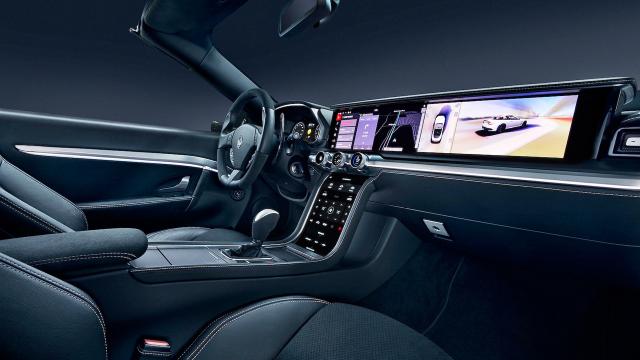‘Seamless integration’ is a narrative that Samsung has been doubling down on since Unpacked in New York last month.
As the company continues to to its suite of smart home products, it is clearly trying to ensure that users aren’t removed from the convenience of the ecosystem.
And to do that, I think they may even build a smart car.
Whether that means a physical vehicle or software, it’s still the logical next step when it comes to expanding the influence of Samsung smart home products. Which is why I asked about Samsung’s plans for vehicle integration recently at IFA.
“It’s an obvious direction and I think it will happen,” said Sunggy Koo, Vice President of smart appliances and home IoT for Samsung.
“The car is a extended space from the home, even though it’s on the road. But definitely yes, the car is another good place to do extend the seamless experience into.
“We spend a lot of time in the car I don’t know about you guys but I spend a lot time and I do a lot of things in the car. These cars are now transforming themselves. Therefore the concept of the connected car is just getting started.
“There is huge potential for innovation in the next couple of years, which will include interactions with devices at home and of course thing,” he says while pointing to his Samsung branded phone.
Despite playing coy during this interview, Samsung already showed off what a Samsung connected car might look like at CES earlier this year.
And it may even be hinting at more than that.
The below video reveals a Samsung ‘digital cockpit’ containing a tonne of tech, including dual screen display (one of which pops up) and an intriguing system which replaces the car’s mirrors. The video is then projected onto a screen that is situation where a traditional rear view mirror usually is.
The SmartThings appears and briefly shows how the driver would be able to control their home appliances from the car screens.
Bixby is also strongly highlighted as an intelligent form of voice control that would increase safety, as well as provide driver convenience.
Third party integration gets a mention, which fits into Samsung’s narrative of a more open ecosystem. And there is also a demonstration of web searching and multimedia use on the passenger display screen.
What is interesting about this demonstration is that it doesn’t just demonstrate software, but also quite a bit of hardware hardware.
It makes me wonder if the company isn’t just planning on offering software solutions to automotive companies, but is acually going to manufacture its own smart cars.
This may sound like an insane theory. Especially because Samsung also debuted its DRVLINE platform at CES — a hardware and software solution that allows auto manufacturers to build customised autonomous vehicles.
Plus, the automotive industry is tough. Look how much trouble Tesla is still having 15 years in, and that’s with an extremely cool product line.
But here’s the thing, Samsung isn’t new to the industry. Samsung Motors was founded in 1994, and after large losses partnered with Renault in 2000 and rebranded as Renault Samsung Motors.
Since then the hybrid company has produced a few different vehicles, but they’re just not that widely distributed.
Taking the Samsung SM5 as an example – the first generation was only sold in South Korea, with the second gen also pushing into South America.
It wasn’t until the third generation that some versions began to be offered in Europe and Australia as the Renault Latitude.
Interestingly, there is apparently an agreement to only keep the shared company name until 2020, which isn’t that far away.
Could another automotive rebrand with a shiny new smart and wider distribution happen? If so, I hope it’s called the Galaxy Car.
Alternatively, were Sunggy Koo’s comments simply in reference to DRVLINE, software and how SmartThings and Bixby may also be integrated?
We can only speculate for now. But I do think that the video, push towards seamless integration, Samsung’s automotive history and the timing is interesting to say the least.
The author traveled to IFA as a guest of Samsung and Huawei.
